Magnus Jahre
Streamlined Deployment for Quantized Neural Networks
May 30, 2018



Abstract:Running Deep Neural Network (DNN) models on devices with limited computational capability is a challenge due to large compute and memory requirements. Quantized Neural Networks (QNNs) have emerged as a potential solution to this problem, promising to offer most of the DNN accuracy benefits with much lower computational cost. However, harvesting these benefits on existing mobile CPUs is a challenge since operations on highly quantized datatypes are not natively supported in most instruction set architectures (ISAs). In this work, we first describe a streamlining flow to convert all QNN inference operations to integer ones. Afterwards, we provide techniques based on processing one bit position at a time (bit-serial) to show how QNNs can be efficiently deployed using common bitwise operations. We demonstrate the potential of QNNs on mobile CPUs with microbenchmarks and on a quantized AlexNet, which is 3.5x faster than an optimized 8-bit baseline. Our bit-serial matrix multiplication library is available on GitHub at https://git.io/vhshn
Scaling Binarized Neural Networks on Reconfigurable Logic
Jan 27, 2017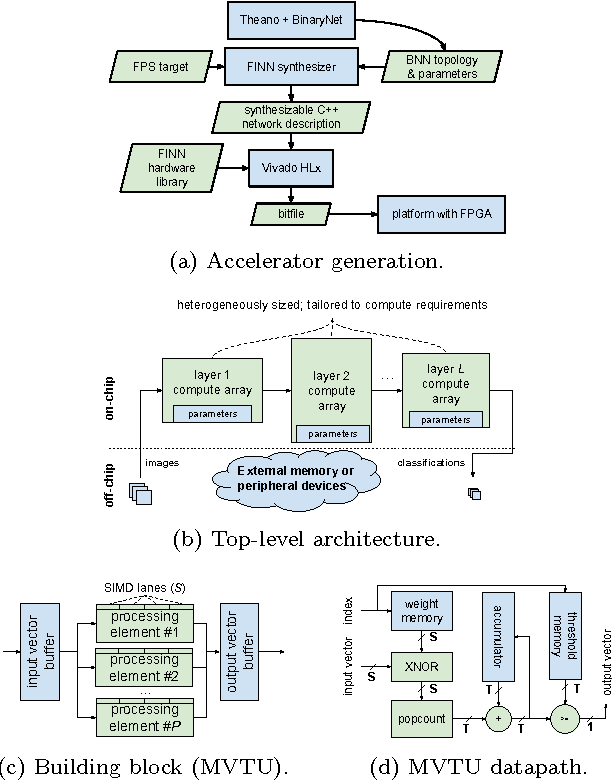

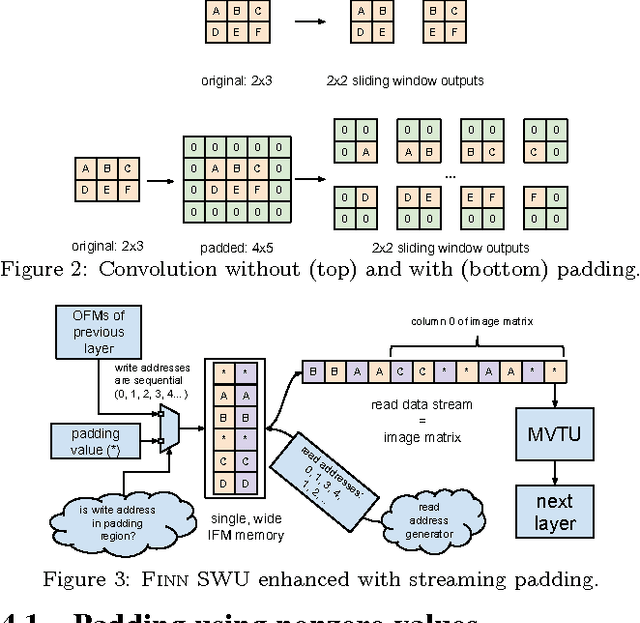
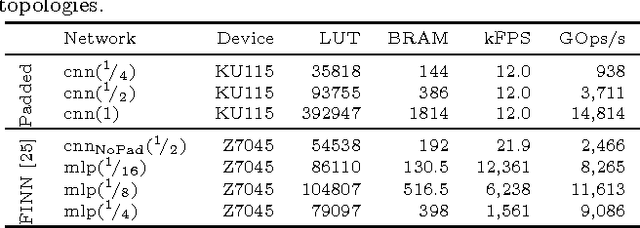
Abstract:Binarized neural networks (BNNs) are gaining interest in the deep learning community due to their significantly lower computational and memory cost. They are particularly well suited to reconfigurable logic devices, which contain an abundance of fine-grained compute resources and can result in smaller, lower power implementations, or conversely in higher classification rates. Towards this end, the Finn framework was recently proposed for building fast and flexible field programmable gate array (FPGA) accelerators for BNNs. Finn utilized a novel set of optimizations that enable efficient mapping of BNNs to hardware and implemented fully connected, non-padded convolutional and pooling layers, with per-layer compute resources being tailored to user-provided throughput requirements. However, FINN was not evaluated on larger topologies due to the size of the chosen FPGA, and exhibited decreased accuracy due to lack of padding. In this paper, we improve upon Finn to show how padding can be employed on BNNs while still maintaining a 1-bit datapath and high accuracy. Based on this technique, we demonstrate numerous experiments to illustrate flexibility and scalability of the approach. In particular, we show that a large BNN requiring 1.2 billion operations per frame running on an ADM-PCIE-8K5 platform can classify images at 12 kFPS with 671 us latency while drawing less than 41 W board power and classifying CIFAR-10 images at 88.7% accuracy. Our implementation of this network achieves 14.8 trillion operations per second. We believe this is the fastest classification rate reported to date on this benchmark at this level of accuracy.
FINN: A Framework for Fast, Scalable Binarized Neural Network Inference
Dec 01, 2016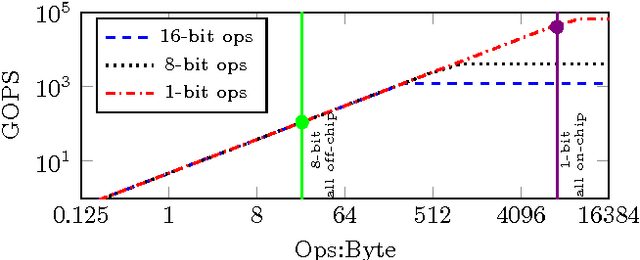
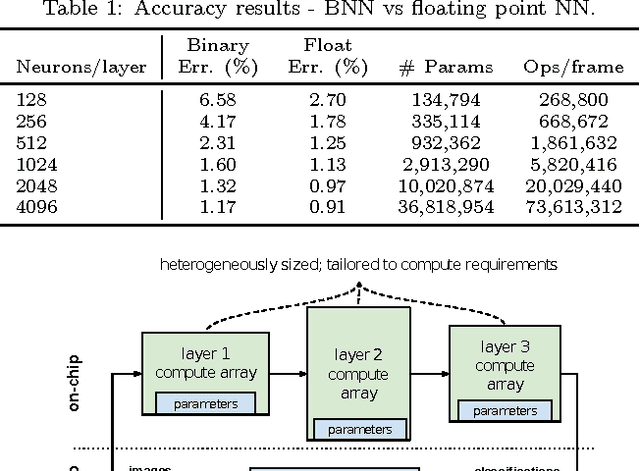
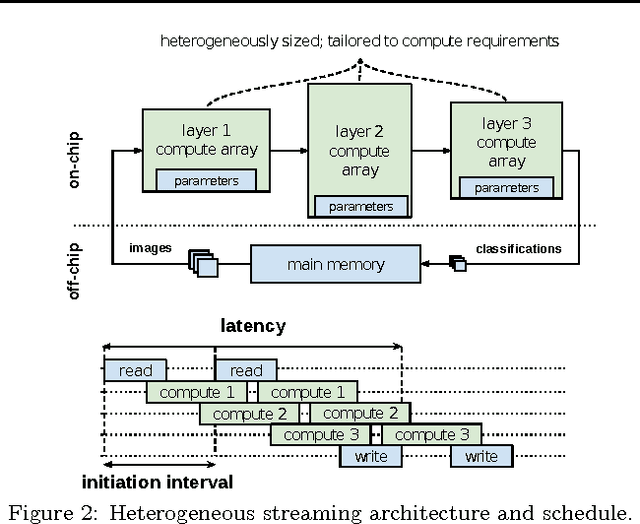
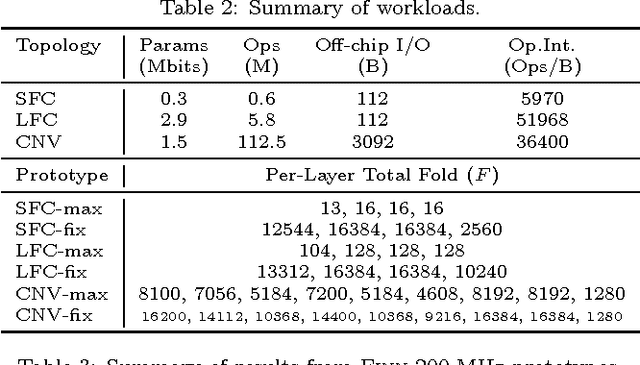
Abstract:Research has shown that convolutional neural networks contain significant redundancy, and high classification accuracy can be obtained even when weights and activations are reduced from floating point to binary values. In this paper, we present FINN, a framework for building fast and flexible FPGA accelerators using a flexible heterogeneous streaming architecture. By utilizing a novel set of optimizations that enable efficient mapping of binarized neural networks to hardware, we implement fully connected, convolutional and pooling layers, with per-layer compute resources being tailored to user-provided throughput requirements. On a ZC706 embedded FPGA platform drawing less than 25 W total system power, we demonstrate up to 12.3 million image classifications per second with 0.31 {\mu}s latency on the MNIST dataset with 95.8% accuracy, and 21906 image classifications per second with 283 {\mu}s latency on the CIFAR-10 and SVHN datasets with respectively 80.1% and 94.9% accuracy. To the best of our knowledge, ours are the fastest classification rates reported to date on these benchmarks.
 Add to Chrome
Add to Chrome Add to Firefox
Add to Firefox Add to Edge
Add to Edge